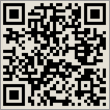Near- Field Communication for Helping the Blind and the Handicapped
Near field communication doesn?t only necessarily have to be something that makes it easier for people like you and me to pay and a cool way for us to view advertisements, websites etc. it can also be used as a great way to make the lives of the blind and handicapped much easier. NFC could be a great way for someone in a wheelchair to be able to pay for their goods without rifling through a bag or purse or having to rely on someone else to follow them around with money. Beyond that it could be used for so that blind people could have things automatically read to them just by swiping their phone past it instead of having someone else read it or instead of them having to find where the brail is placed if it is there at all. A recent scholarly article from the IFLA journal entitled, ?The Ubiquitous Library for the Blind and Physically Handicapped- A Case Study of the LG Sangnam Library in Korea? is an outstanding study on how NFC could help out tremendously simply in the library. If those things were applied to other real world settings NFC could be ground breaking for blind and physically handicapped people all around the world. The following is the abstract to the entire article which can be found here.
?This paper presents a project of the LG Sangnam Library that made real the concept of a ubiquitous library. The project intends to provide a service so that the print-disabled can take advantage of the library system and information services without complicated procedures in connections and user certifications by using NFC (Near Field Communication) technology-applied mobile phones. This model is composed of three scenarios. The first scenario offers a Digital Talking Book (DAISY) over the Internet. A user with a NFC reader-equipped mobile phone simply touches a dongle that is connected to a computer and enables the computer to conduct NFC and Bluetooth communications. The second scenario uses a wireless connection to the Internet via a mobile phone and the final scenario uses voice services via a telephone to access the library services. In the library services, users can listen to Digital Talking Books in real time. As shown in the scenarios, the purpose of the project is to offer a comfortable information environment for the print-disabled, including the blind and physically handicapped, by using ubiquitous technology.?


